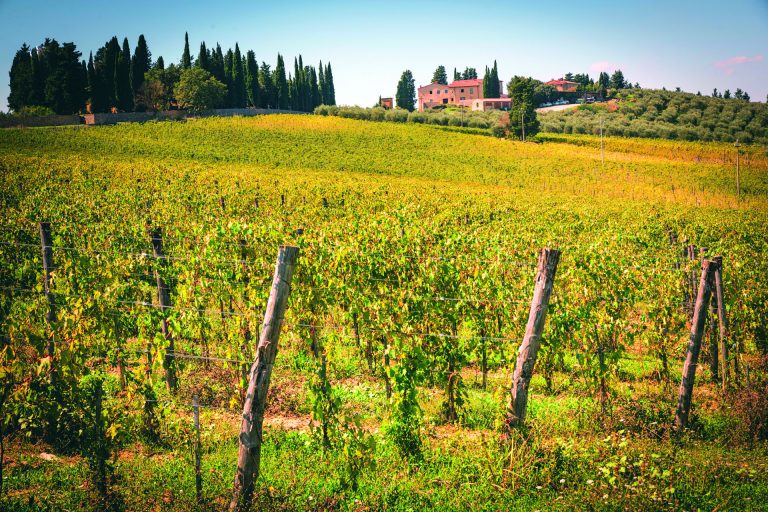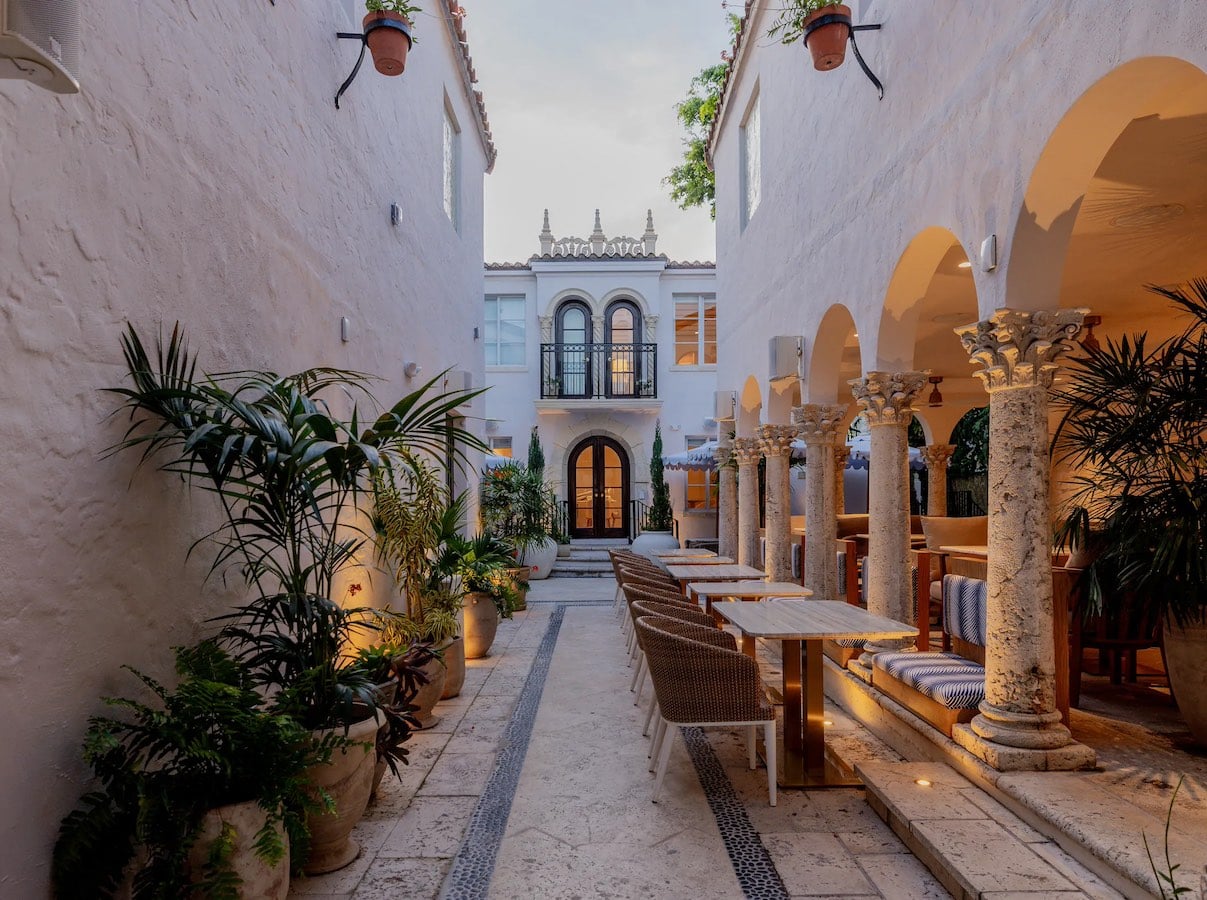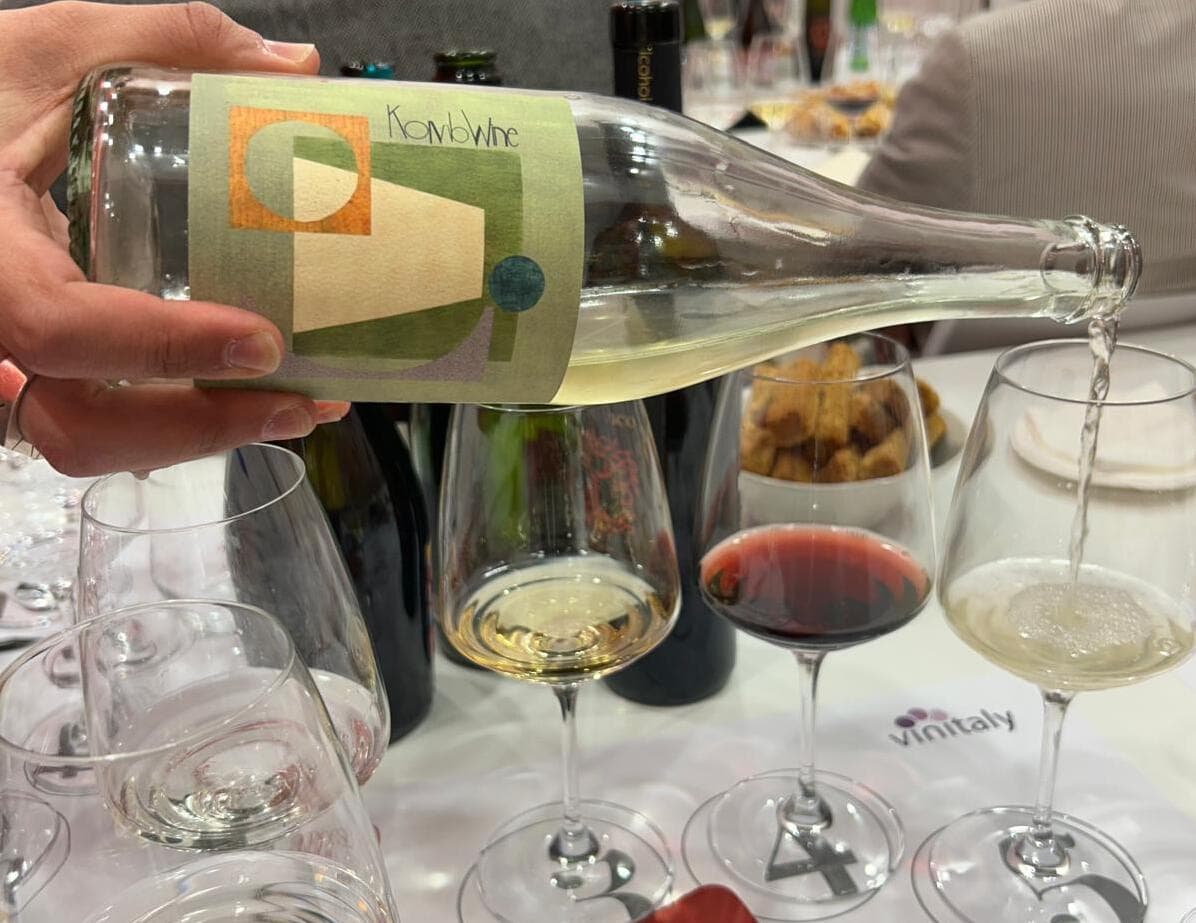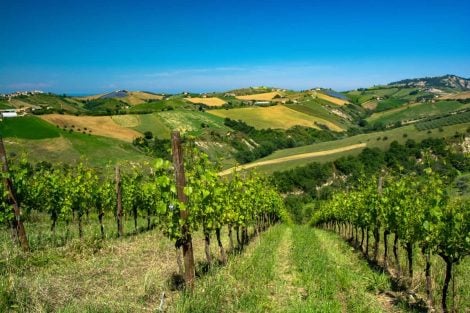Bibbiano interprets Chianti Classico
Bibbiano is one of the most beautiful properties of the Chianti Classico. Located in Castellina in Chianti, in the southwestern part of the area, overlooking the Val d'Elsa, where forests, olive groves, arable land and vineyards alternate to compose an evocative setting. Here, since 1865, the Marrocchesi Marzi family has been producing wines, in actual fact... excellent wines. For many years, from 1942 to 2004, Bibbiano wines were elaborated with the collaboration of a legend of Tuscan oenology: Giulio Gambelli, Master Taster, creator of some of the iconic labels of the recent history of Tuscan oenology.
Today the winery has thirty hectares of vineyards within a much larger property of about 220 hectares and avails itself of the agronomic and oenological consultancy of Maurizio Castelli, another deep connoisseur of this land and its grapes. At the helm of Bibbiano are Tommaso and Federico Marrocchesi Marzi, who have matured experience in international business management and represent the fifth generation of the family taking care of this land. Respect for the territory, attention to tradition, organic and sustainable production, a state-of-the-art cellar, this is their philosophy. Among the company labels, two fully represent the Bibbiano style and approach to wine: Chianti Classico Gran Selezione, obtained from pure Sangiovese, which are the timely and careful interpretations of two different terroirs through the classic grape variety of this land. These are Vigna del Capannino and Vigne di Montornello.
- The bottles of the ten vintages of the two Bibbiano labels are ready for the vertical organized exclusively for Gambero Rosso
- La vigna del Capannino vineyard
- An image of the tasting led by Marco Sabellico, curator of Gambero Rosso Vini d'Italia guide
- The Montornello vineyards
La vigna del Capannino
There are seven hectares of uniform compact clay between 270 and 280 meters above sea level, a platform with a unique geological profile, a fragmented, coherent and compact Alberese, full southwest facing, looking towards Monteriggioni. Here the conformation of the hills conveys a flow of sea air; in summer the vineyard is exposed to the sun from 5 am to 7 pm. Here we find Sangiovese grosso, brought from Montalcino by Giulio Gambelli in the 1950s, which was still selected and multiplied in the company for the new 2008 spurred cordon vine training system, with 5,800 plants per hectare. Capannino offers deep and structured wines.
Chianti Classico Gran Selezione Vigna del Capannino
2018
Dark purple ruby colour, it has a complex, fine, intense and fresh nose, with notes of citrus, candied violet, cherry and raspberry, followed by pomegranate, vanilla, and finally a delicately balsamic fresh note... The mouth is led by the fruit, where the pomegranate, raspberry and violet, then annurca apple and quince return intensely; it has a solid acid structure, fine tannins. Astringent, fresh, savoury, it has a long finish on the fruit. Classic but modern.
2016
Deep, intense ruby red, with a slight garnet hue on the nail.
Generous nose, rich in notes of red fruit, then ferrous, with tones of Virginia tobacco, cherry and currant. The mouth is pulpy and consistently thick with tones of red and black fruit: assertive, rich, showing tannins of great finesse. It is sapid, elegant, harmonious, and closes long on black fruit, on tobacco and dark chocolate, with a delicate toasted coffee note. Compelling.
2013
Deep ruby red that turns to garnet, it has a complex, fine and delicately evolved nose that is still vibrant with red fruit with notes of blood and citrus peel. The palate is elegant, deep and articulate, complex, and opens on earthy tones of undergrowth, which fade on memories of porcini mushrooms and black truffle. It's elegant and relaxed in the finish, delicately balsamic, long, with a persistent memory of bitter chocolate, and very silky tannins. In short: very elegant.
2007
It has a beautiful dark ruby colour, dense, intense, with a light, newly developed nail. On the nose it's surprising for the freshness of the balsamic notes, for the lively tones of small red fruits which then turn to shades of cacao. In the mouth it is enveloping and soft, offers a ripe black fruit, dense and elegant in the tones of black cherry jam: persuasive and almost sensual in its rich pulpiness. Then there are vanilla, smoky and toasted notes, coffee powder, cherry jam, and above all it offers us a very fine tannic complement. Vertical, deep, barely austere, it calls for important pairings.
1997
At its ripe age, it has a beautiful garnet ruby colour with a clear orange edge. On the nose are chocolate, cherries in alcohol (familiar with Mon Chérie liqueur filled chocolates?), Elegant tones of well-developed ripe fruit, a complexity of spice tones but a black fruit, a blueberry jam that always returns, vital and inviting. Also on the palate it proves energetic, firm and lively, with a good push, straight and vertical, a dynamic wine, which has pulp and above all an enjoyable complexity. Smooth tannins and a nice acidic backbone support the pulpy fruit, which turns to elegant nuances of tobacco, which accompany it in an enveloping and really long finish, refreshed by the nuances of candied orange.
Le vigne di Montornello
Fifteen hectares entirely surrounded by woods. The exposure here is to the north-east. The soils are Pliocene sediments, loose clays of various compositions, red and gray, probably a prehistoric lake shore, alternating with sand and gypsum blades and with the presence of alberese gravel, in the form of rounded pebbles. The average temperature is 4-5 degrees lower than the Capannino, and the hours of sun exposure are fewer. Exposed to north winds, it attracts humidity from the surrounding woodland area. We find clones of Sangiovese resulting from the Chianti Classico 2000 project, planted at 5,800 units per hectare and trained in Guyot.
Chianti Classico Gran Selezione Vigne di Montornello
2018
The colour is a beautiful, intense and clear ruby, and the nose opens up juicy and inviting with notes of cherry and morello cherry, raspberry and black currant, to fade into notes of scrub and floral. On the palate it's broad, enveloping, clear and harmonious, the fruit is elegantly ripe. Material but flowing, it is a wine of balance and harmony but which does not renounce solid fullness. Black olives, sour cherry, then citrus nuances that give way to notes of tobacco and spices. Well present but velvety tannins make it a dynamic and tense red, which closes very elegantly and with hints of pomegranate. Like all Bibbiano wines it has a bright future ahead of it.
2016
Clear and intense ruby red, it opens on the nose with a symphony of Mediterranean herbs, offering creamy and pulpy red and black fruits, very clear and vital, which then turn to orange and mandarin peel and candied citrus. The mouth is elegantly structured, the wine has a beautiful dynamic vitality, smooth tannins and the right alcohol content. The fruit becomes pulpy and whole again, the finish is long, fresh, complex, spicy… In short, marvelous!
2013
Still a wine of finesse and tenacity, evident from the still clear and vital ruby colour with just a hint of evolution. The nose confirms it: the red fruit is there, ripe but not too much, and elegantly turns on spicy and smoky memories. In the mouth is pulp, flavour, acid tension, creaminess of fruit and firm but elegant tannins. An articulated, complex wine that winds through fruit, spices, medicinal herbs and notes of tobacco and coffee that accompany a long enveloping finish that fades into notes of coffee, leather, cherry. Persuasive.
2007
The slightly evolved garnet colour tells us that this is a wine to be seized at the moment. The nose opens with sweet notes of fruit in alcohol, tar and leather. It is advanced in years but still holds good vitality. On the palate it is thin, ripe, the acidity keeps it taut but the fruit begins to dry up, and the evolved notes of ancient wood and wax appear that we do not find in the more combative and dynamic Capannino of the same vintage. Subdued autumnal harmonies.
1997
A beautiful mature Chianti Classico, the result of a hot vintage, which holds the scene firmly. The colour has evolved, and also its aromas, but they are intense, complex and inviting with beautiful notes of overripe cherry, black fruit jam, puer tea, Virginia tobacco, cedar wood and spices. On the palate it shows pulpiness, fruit, a firm and caressing structure in astringency, which opens progressively and elegantly in the glass, widens on the palate and fades gloriously complex, elegant and long. What a success!
by Marco Sabellico


 Versace opens a super hotel with an Italian restaurant. Here's what Donatella Hotel & Restaurant in Miami will be like
Versace opens a super hotel with an Italian restaurant. Here's what Donatella Hotel & Restaurant in Miami will be like At The Crown Tirana, service and quality at the highest levels
At The Crown Tirana, service and quality at the highest levels We tasted Komb(w)ine, the new product that combines grape must and kombucha. Here’s our verdict
We tasted Komb(w)ine, the new product that combines grape must and kombucha. Here’s our verdict What changes for the export of Italian wines to China under the new regulations?
What changes for the export of Italian wines to China under the new regulations? “Forget dealcoholised wines. The future is Komb(w)ine.” Moser and Ravizza present a new grape must-based product
“Forget dealcoholised wines. The future is Komb(w)ine.” Moser and Ravizza present a new grape must-based product






